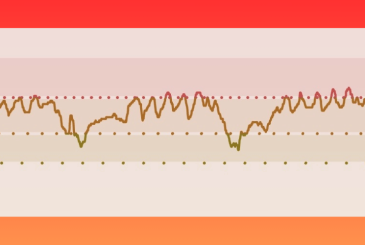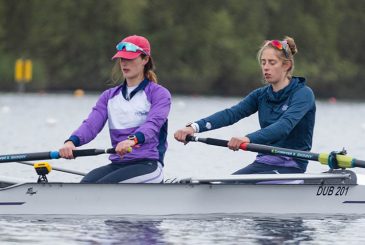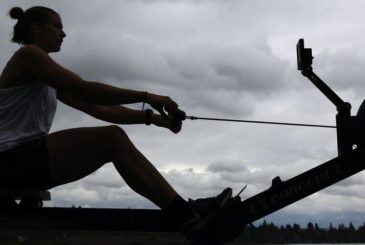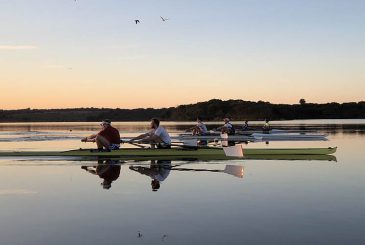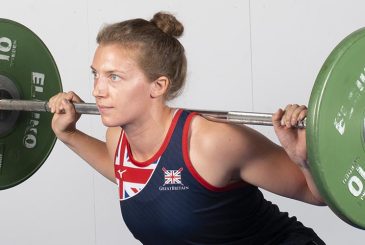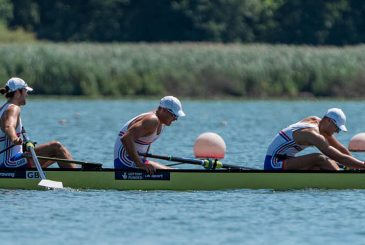Rebecca Charlton looks at why cycling holidays can make great training camps for rowers
When Rebecca Romero switched from rowing to cycling and bagged Olympic gold it was pretty evident that the crossover between the two sports was significant. It’s well documented that many professional rowers use cycling camps as an important part of their training schedule so why is hopping on two-wheels so useful?
“Well-established cycling training camps represent an excellent way to achieve a high volume of good quality endurance training while also being ideal training variation for those athletes whose predominant sport isn’t cycling,” explains Rob Mortlock, lead coach at London’s Lee Valley VeloPark.
“Rowers often have exceptional ability to operate at their aerobic capacity, like a pursuit cyclist on the track. They have also learned how to disassociate themselves from the discomfort felt when exercising at this level.
He adds, “Although not identical, the body movements used for rowing are dependent on the same large muscle groups as cycling, so using cycling for both variation purposes and to build an aerobic base can be useful for rowers. As a lot of rowing training is undertaken on the water or on indoor rowing machines, cycling can also be an accessible and efficient way simply to travel to and from training, or to use for recovery level exercise,” he says.
>>> Alternative training camp ideas: Skiing
Racking up the miles is definitely easier on a training camp as Mortlock reminds us. “Most people would cite warmer weather as a key benefit of a training camp, but there’s also the quality of both routes and road surfaces to consider as these are usually far superior to British conditions. The chance to ride in a large, controlled group, on relatively traffic-free roads is a major bonus, and with many established routes to suit varying aims and abilities, everyone can be catered for. An often underrated part of a training camp is the quality of rest and recovery. With fewer distractions and chores, the riders can make full use of non riding time by getting massages, chilling out by the pool, and meeting their nutritional needs with the local delicacies.”
Did you know?
A key British Rowing membership includes combined liability and personal accident insurance to protect you while are you are rowing. The policy also includes:
• Cycling while training for rowing, including cycling to and from the boathouse
• Competitive cycling, when organised by British Rowing
• Cycling on non-hazardous terrain, such as parks and open spaces.
Why cycle?
Mark Homer, GB Rowing Team Head of High Performance Sport and Medicine, says: “Cycling allows rowers to complete longer sessions than they could on an ergo or in a boat. This has positive implications for the physiological adaptations to endurance training. Also, the inevitable variation in gradient introduces a fartlek (changes in intensity) element to training that is often missing from rowing programmes.”
>>> Alternative training camp ideas: Hiking
Where to go?
Majorca
Offering roads for every training requirement – with its idyllic mix of flat lanes, mountain climbs and coastal bike-paths – Majorca is the most popular training-camp destination when it comes to cycling. The weather starts becoming more reliable for warmer days in the saddle from March onwards.
Tenerife
Not for the fainthearted, Tenerife is the choice of the best riders in the world and is known for its benefits of altitude training. You will basically spend your time there climbing one mountain: the infamous 3,718m high Mount Teide.
Lanzarote
Volcanic, warm and windy – that just about sums up training in Lanzarote. You’re pretty much guaranteed sunshine, and it’s definitely warmer than Blighty all year round. The windy conditions and climbs are great if you’re after tough sessions.
Cycling camp tips
Rob Mortlock, lead coach of Lee Valley VeloPark, home to the Olympic Velodrome, serves up his top tips for honing your on-bike technique.
- Before going on a camp, make sure you know the hand signals and rider etiquette that will be expected in a group. You’ll need to point out potholes for those behind, indicate when you’re changing from the front and work together to communicate at major road crossings and junctions. Learn to ride ‘on a wheel’ and close to others before going away, being relaxed and confident in a close group is essential. It’s usually easier to ride near the front too, rather than in the back where all the changes in pace from the front can be amplified.
- Aim for a cadence of 90-100rpm, when on the flat. If this sounds high then practise for a few weeks before you go. It’s more efficient to use a lighter gear and pedal in this range, rather than grinding out a huge gear and tiring the muscles prematurely or even risking a strain. Training camps can involve long mountainous climbs, so using a variety of body positions both in and out of the saddle on climbs can maximise your effort whilst minimising the risk of injury.
- Make full use of the training time available on a camp – they are traditionally used for building an aerobic base, with high volume/low intensity rides. However, riders can easily get caught up in the moment, and want to nail that climb before everyone else, or win that sprint for the last sign. If you’re going for seven days, then pace yourself so you can still be doing the three-hour ride on the sixth or seventh day.




